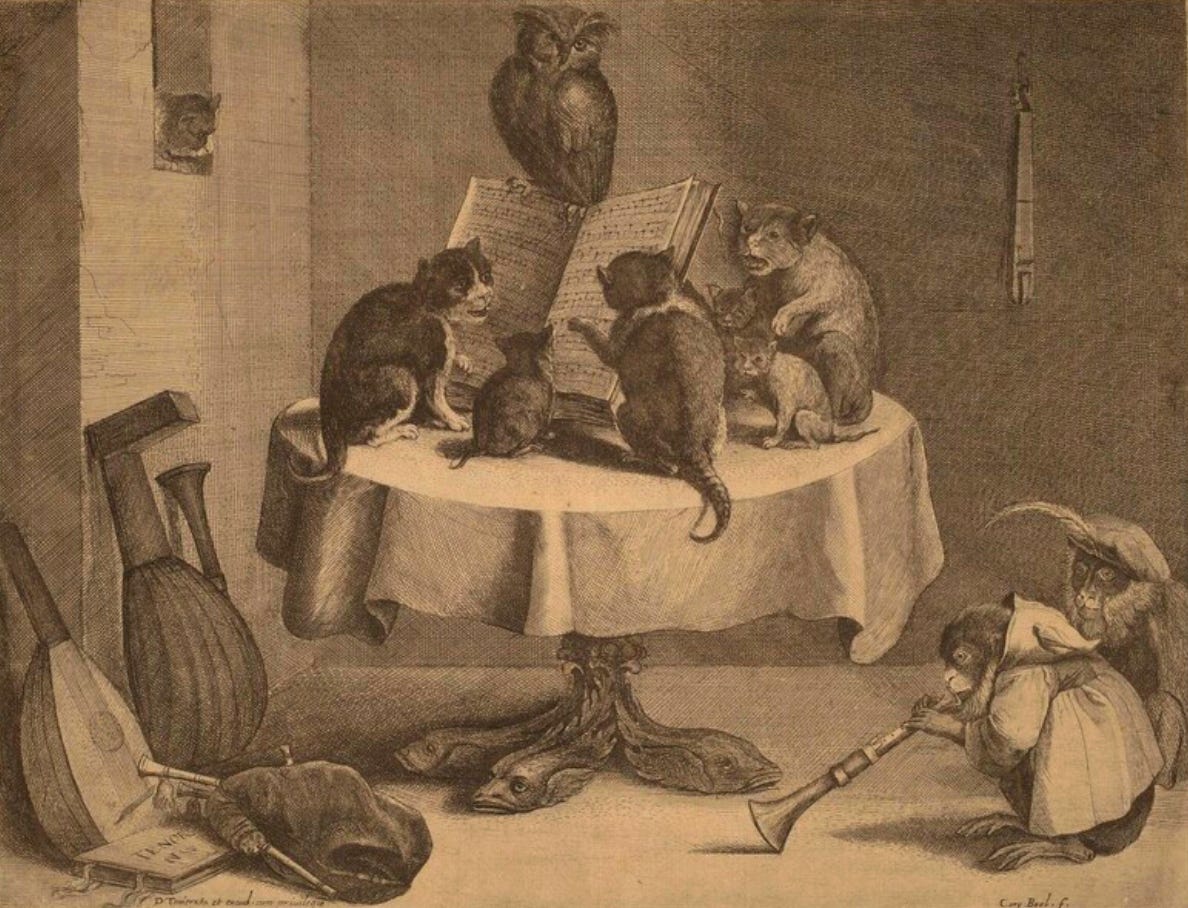Substack & The Dopamine Scroll
Where should an Old Truck go for more Good Coffee?
Our series discussing Timothy Snyder’s “On Tyranny” through a local lens will continue next week. Today, it felt pressing to bring up subscriptions, curation, and process addiction.
Your own thoughts and comments are always very welcome.
We recently turned on an option allowing you to pay for your Old Truck Good Coffee (OTGC) subscription, if you want to, even though we have kept all our content free for all subscribers. Just like this image from the National Gallery.
We did this, because it feels highly validating and encouraging to get any money at all for the hours we pour into writing (and recording) new posts for you every week. We have been at this since a year before last February. There are 110 posts on our stack, growing twice a week. We love this labor, most weeks.
We have plans coming soon ahead for podcasts of some amazing, free-range discussions Joel and I have been having on politics and culture, with each other, as well as among friends with differing views. We are also calling in guest writers who share our urban+rural interchange lens. American culture is quite a wild place to explore, when you view cities from the countryside, and vice-versa.
If most of us in the U.S.A. did not fundamentally like each other, would Beyoncé and Lil’ Nas X have huge country hits? Would Morgan Wallen be on SNL, grumpy-assed or otherwise? Might we all have more in common than the billionaires — and niche-burrowing influencers — find it safe and profitable for us to believe?
That said, Substack keeps changing in ways that reduce it from a humanely-curated readers, writers, and listeners haven to just another social media doom-scroll. Which is troubling, when, like Joel and I, you spend hours writing and recording heartfelt essays, only to see Substack drop them into this:
scroll, scroll … pause, scroll … like! … scroll, pause, scroll … scroll x 5 …love! … scroll … angry! type, type, type … click, scroll ... ugh (set down phone) … fiddle, faddle, twaddle, pee … (pick up phone) … tap, scroll, scroll …
Every social media platform already knows what we like. We tell them, and they tell each other. Scrolling through feeds that only occasionally deliver what the algorithms know we like is an intermittent reward process1 designed to keep us “engaged” with paid content. This process loop has been wired into us since our walk, walk … berry! … walk days on the savannas. The nudge our brain delivers to “find just one more, grab the next branch” kept us hunting berries instead of starving. Now, infinitely scrolling our feeds — hunting for just one more like! — exploits the same neural loop. The social media engineers know this.
We wish Substack would show more respect to its users than to abuse us with infinitely scrolling user interfaces designed to be physically compulsive.2
Joel and I are old-school when it comes to tech. I tried to use Fidonet over a pre-internet, pre-AOL dial-up service. I got my first email address in 1991. I hand-coded my first website in 1995. I have been what is now called a “social media manager” since 1997. Joel has similar history.
We both yearn for the slow-cooked digital sanity that Substack, and the internet itself, had when it began. We want to participate in growing human culture alongside readers and listeners who curate content for each other, by directly sharing what they truly enjoy. Slowly. Organically. With pleasure. With friends.
We do not want algorithms exploiting the dopamine seductions of intermittent-reward loops. We do not want to be force fed fast-moving lists of twitchy videos and click-bait. Unfortunately, investors just want the financial returns delivered by addiction (c.f., FaceGram, TwiXter, PinTok, R. J. Reynolds Tobacco Co.).
How OTGC responds ahead is not yet clear. All we can say is that we are in this for the culture, for the humanity, and for the weaving of connections across divides. Not to feed addiction. Not to provide training content for AI. Not to be useful idiots in yet another social media scroll designed by dopamine engineers to exploit us for the billionaires.
We know we have options. We are not trapped on this platform. We want to participate in healthy community cultures. What do you think we should do?
“[Social Media] addiction is driven by a combination of psychological factors, such as low self-esteem and mental health issues, technological mechanisms like infinite scrolling and personalized notifications, and social influences, including peer pressure and exposure to idealized content.” (emphasis added)
Understanding Social Media Addiction: A Deep Dive:
https://pmc.ncbi.nlm.nih.gov/articles/PMC11594359/
“[S]ocial media platforms employ sophisticated algorithms and design features that capitalise on basic psychological principles to maintain user engagement…”
Dopamine-scrolling: a modern public health challenge requiring urgent attention
https://journals.sagepub.com/doi/pdf/10.1177/17579139251331914



